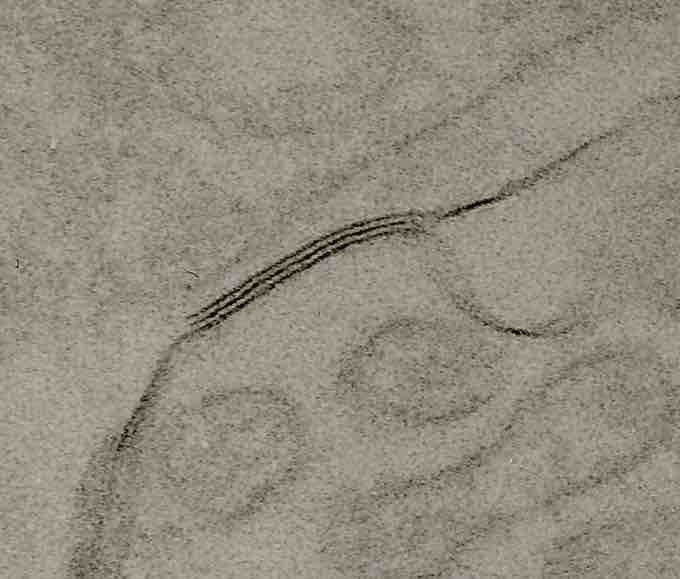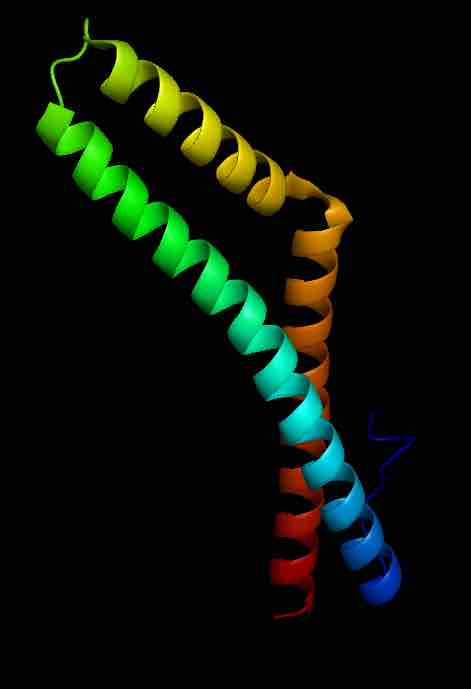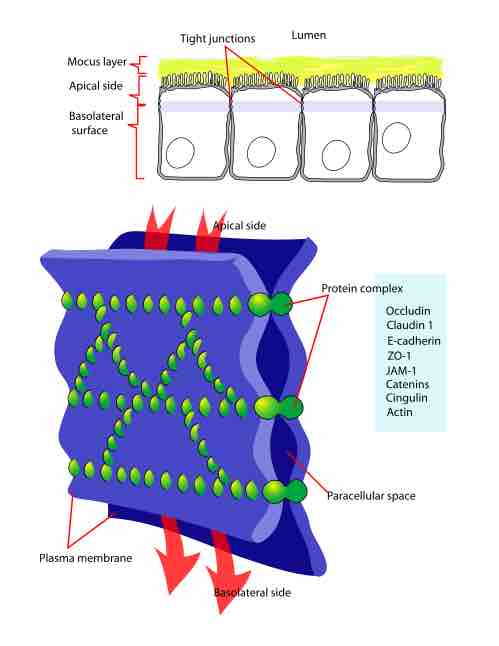Tight Junctions
Imagine a largely waterproof zipper connecting the sides of two different jackets. That zipper is like a tight junction (TJ), also called an occluding junction. A TJ creates a small zone that occludes the extracellular space (the space between cells).
This is why tight junctions are also called zonula occludens. The word zonula comes from words that mean small zone or encircling belt, while occludens comes from the Latin word occludere, which means to close up.

Tight Junction
An electron micrograph showing a tight junction in rat kidney tissue. The three dark lines of density correspond to the tight junction and the light lines in between correspond to the paracellular space.
Location and Function
Tight junctions are virtually (but also partly selectively) impermeable seals that encircle cells and bind them together into leakproof sheets. In other words, the plasma membranes of adjacent cells essentially fuse together tightly in order to limit the leakage of various substances between the two cells.
What can and cannot go through all depends on the substance’s size, charge, as well as the location and precise composition of the tight junctions in the part of the body in question.
Tight junctions are located within our body’s epithelia. Epithelia is the plural of epithelium. Epithelium is a word that refers to the covering of the body’s internal and external surfaces. This includes organs (such as skin), blood vessels, and cavities.
Thus, these tight junctions serve various functions, depending on what epithelium is in question. In the skin, they keep us somewhat watertight and help keep allergens out of our body. In the digestive system, they help prevent the leakage of digestive enzymes into our bloodstream.
Tight junctions also serve as a structural support mechanism that help keep the epithelium together.

Occludin
Model of the protein structure of the coiled-coil domain of human occludin.
Composition
A tight junction—a kind of symmetrical cell junction—is composed of numerous important proteins that are either directly involved in its composition or intimately involved with connecting the tight junction to and between the cells in one way or another. These proteins include:
- Occludins, which maintain the barrier between adjacent cells.
- Claudins, which form the backbone of tight junction strands.
- Junctional adhesion molecules (JAMs) are immunoglobulin (antibody) proteins that help seal the intercellular space between two cells.
- Zonula occludens (ZO) are proteins that help link the tight junction to each cell's internal skeleton (cytoskeleton).
The occludins and claudins are the major components of tight junction strands. When fully formed, a tight junction is not one, long, continuous seal. Instead, it looks like a series of local seals joined together in a maze-like fashion.

Tight junction
Diagram of tight junction components.